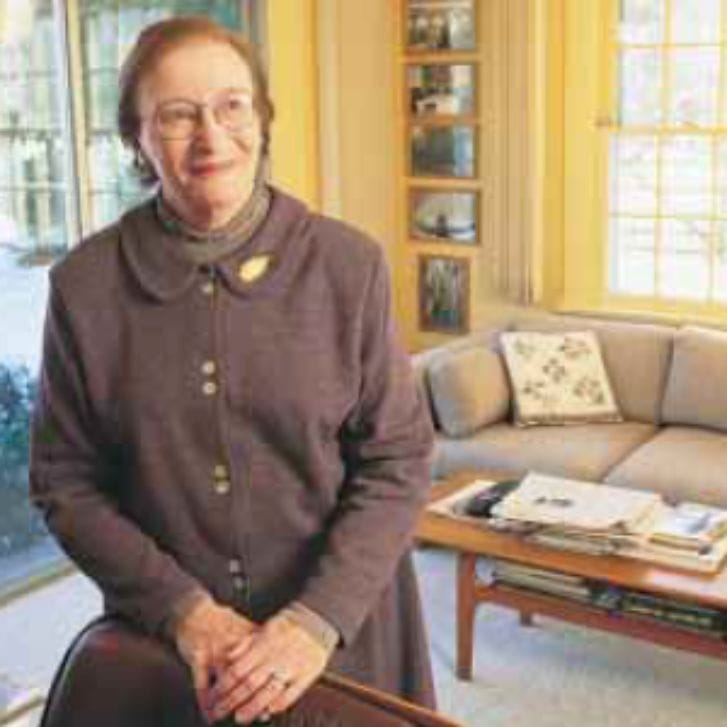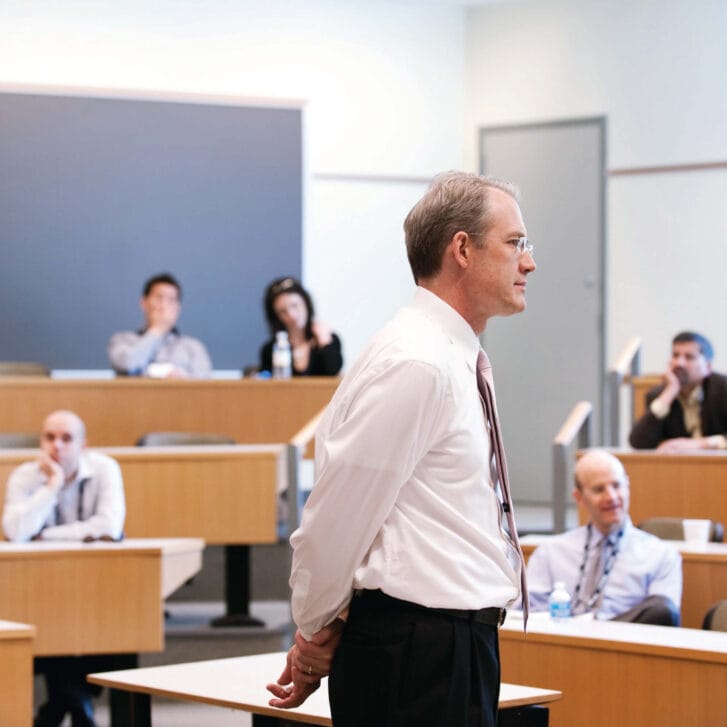Masses of dot-com hopefuls were punted from the Internet with the market’s implosion last spring. Before the collapse, though, came a glorious explosion of growth. Whether joining a startup, or boldly launching one, the collective vision for what was possible appeared limitless. But when the market bottomed in March, much of the funding vanished, too, and many lost their jobs in a cloud of smoke. Some hung on for a while before deciding to leave. And still others remained inside this changing experiment of online business.
One year later, with the dust starting to clear, we decided to contact some of those who rode the Internet rollercoaster. Now defiantly optimistic about redefining themselves in pace with the morphing marketplace, the five Wharton graduates below talk about lessons they learned the hard way and the ones they don’t regret: from the rigors of securing funding, to the drudgery of setting up phone lines, the 18-hour days, the death of a social life, the thrill of launching and the heartbreak of the last day on the job. With candor and humor they reveal why they’re either ready to jump back into the fray, or biding time to plan their next move.
Kimberly Guise
Kimberly Guise, WG’99, a pioneer of Priceline’s WebHouse Club, still remembers the day last October when she found out the dot-com was folding. “I just closed my office door and sat at my desk in disbelief. We weren’t just scaling back, slowing down, or doing more layoffs. The site was to be shut down that night. The next morning Jay Walker, founder of Priceline.com, gave an emotional talk to a rather shocked staff and tried to convey that we hadn’t failed. He stressed that we had a real business with real customers, but had simply run out of money,” says Guise, who was one of the first of five Wharton alums to start at WebHouse Club, a separate company and privately-held licensee of Priceline.com. “What was devastating was that I felt like we were just about to turn the corner of success.”
But the end of one journey has sparked the start of another. On a quest to “get away from it all,” she detoured temporarily from the Internet’s fast track and opted instead to do some soul searching in the Virgin Islands and then test herself with a climb of Mount Kilimanjaro. Deciding on her next step, she says, means first taking stock of where she’s been.
Just one day after graduating from Wharton, Guise started working for Jon Otto, WebHouse’s CEO, in a corporate development role that gave her exposure to all aspects of building the business. As they sped toward the WebHouse Club launch, it would seem she had every reason to have faith in the startup’s future. Within 18 months, WebHouse Club had mushroomed to 700 employees and had garnered arrangements with 8,000 grocery stores and 6,000 gas stations.
“We talked about this period of rapid growth as being organized chaos. Strategies seemed to change regularly. Everyday you went in, you were doing things for the first time,” she says. “It made for an incredibly exciting environment, and one that I savored.”
After the launch, she was promoted to vice president of Business Development and became responsible for pitching the business model to corporate heavy-hitters including Nestle, Coca Cola, Kelloggs and Clorox. “It was a great experience for me pitching to these CEOs. I used to hate public speaking, but now I actually enjoy it.” One of the highlights for Guise was giving the hour-long presentation to the senior executive committee of Nestle. “It was a rush. You spend your career working up to those moments.” But the model was complex, Guise admits, and ultimately may have hobbled WebHouse Club’s long-term chances for success.
“Our model required that the consumers be flexible with respect to the brand that they received in any given grocery category. For example, if you wanted to buy peanut butter, you had to be willing to get Skippy or Jif. Let’s say we collected consumer demand for 50,000 jars of peanut butter in a week. The brand that partnered with us would essentially get all of that business. It meant WebHouse Club had the power to steer sales to one brand.”
Initially, the large corporations had reservations about a model that encouraged consumers to care less about brands and more about price. Sometimes going into meetings meant going into an unfriendly environment. “No brand marketer likes to think that their consumers are purely price-driven,” she says. “It’s their job to convince people to buy a product for its superior quality and unique brand attributes. But when we had two million consumers and had reached over five percent household penetration in some markets, guess what? They started paying attention and, despite any controversy over our business model, they wanted that business because it meant sales and it meant increasing their market share.”
Slowly they began to understand the model, she says, and support it. “We had over two dozen major companies who signed on with us for two year multi-million dollar deals. I don’t think many people realize just how close we were. I certainly didn’t have a love of groceries; my passion was that what we were doing was really revolutionary. You could just feel that we had something that these companies believed in. Crest and Colgate go nuts each year trying to edge each other out to be the number-one brand. There aren’t enough advertising dollars out there to do enough commercials about which brand more doctors recommend. But with just a ten percent subsidy per unit – a cost well below their marginal profit – WebHouse Club could increase the market share overnight for the participating brand by two or three points. It was already very powerful – and that was after just eight months in New York.”
Guise didn’t join WebHouse Club guessing it would be her endgame, but it indeed “had grown into something much bigger than I had expected,” she says. In fact, she was so consumed by the whirl of ideas and work – the revolution – that parts of her life were quietly slipping away. “I was so caught up in what we were doing that this job became my entire life. I ate breakfast, lunch, and dinner there for 18 months. I never even had the gas hooked up on my stove,” she says laughing. For a six-month period she lived in a corporate apartment in Stanford, Connecticut to save time on the commute from her New York City apartment. Working past 10 or 11 pm was the norm, she says.
“The work involved a lot of travel and I had a pretty non-existent social life. At the time, it didn’t bother me because I was so personally and financially vested in what we were doing,” she says. The wild ride seemed to end with a screeching halt, Guise says, but there were signs of trouble looming. Priceline’s falling stock, for one, and some significant strategy shifts. “Sometimes you wondered why we were changing our proposition. Was there something fundamentally flawed with the model? But part of a startup environment is that you have to be able to change your strategy,” she says. “We did a couple 180s. It never seemed like a bad thing. We attributed the changes to growing out of the startup mode and learning as we went.”
That growth sometimes caused confusion. Staff in different departments would work on identical projects, unaware of each other’s efforts. “Maybe we grew too quickly. There were people who had six different jobs in a period of six months and that can be unsettling if you come from a traditional business background. But, there was very much an attitude of putting the company first and, if that meant taking on a new role, you just did it.”
When the cruel business of shutting down arrived, Guise was part of a small wind-down team. Employed for an extra 30 days, she spent the time on the phone collecting money from clients. “It was so depressing. No one was there, all the desks were empty and there were no cars in the lot. Everything had been boxed up, and here I was calling these manufacturers I had convinced to sign up with us.”
Her instinct, when her last day ended November 3, 2000, was to flee. Alone. While planning the Kilimanjaro climb, she decided, she’d rest for a few weeks in St. John, Virgin Islands. “I intentionally only left myself two days in New York just so I wouldn’t send out my resume. I wasn’t mentally prepared to talk to anyone, much less interview. I needed to recharge myself.” Guise flew to St. John alone but found it easy to meet new friends. She regrouped and reflected by fishing and hiking and even volunteered to lecture on the Internet at a public school.
“I half-heartedly joked that I was going down to the Caribbean to have a mental breakdown. But when I got there, I was so genuinely happy and relaxed, it never happened. I had gotten to a point since graduation where I was on this treadmill of working as hard as I possibly could. When I was forcibly catapulted off that treadmill, it enabled me to step back and gain a whole different perspective on life. I was very high-strung and mistook those stressful feelings for a sense of super dedication to the job.”
After almost two months of the ‘good life’ on the beaches of the Virgin Islands, the Kilimanjaro climb provided Guise with an equally rewarding experience. “Climbing to 19,340 feet was the hardest thing I’ve ever done physically. It’s definitely the kind of thing you only want to do once in a lifetime.” The nine-day trek of Africa’s highest peak gave Guise more time to ponder her future aspirations. “Most Wharton grads, I suspect, know they can do anything they set their minds to. The hard part is coming up for air often enough to assess if your mind is really set in the direction you want to be headed, both professionally and perhaps, even more so, personally.”
Now back on solid ground, with her passion for the startup environment intact, Guise knows she’ll stay in the business world. But this time, she says, it will be with the benefit of hindsight. “I was so blinded to what life was like off that treadmill. Now I’m having a taste of it. There was the element of personal embarrassment because of the failure. I didn’t want to talk to my friends or family about the questions. But I’m over it now. In a very strange way I am so content about my new outlook on life, I’m almost thankful the whole thing happened.”
Peter Fader
Wharton marketing professor Peter Fader sees the crash and burn of countless dot-coms as just another learning curve for those caught in the middle when the bottom dropped out. The medium may be shifting from bricks to clicks, says Fader, but the core of what makes a successful business has not changed.
“It’s the same basic principals –it’s delighting the customers. They need to differentiate themselves from others. With the startups, the emphasis used to be acquiring longlist clients. Now, it’s finding credible companies to finance them.”
Today’s investor, he says, will scrutinize much more closely –even more than a year ago. Many of those who initially found success on the Internet were just “lucky people at the right time and the right place. The market is a funny thing and there are a lot of people learning that no matter what their idea is, or how much they think their product will help customers operate more efficiently, it no longer guarantees success.” Fader has seen droves of students who left graduate school to start or join dot-coms now return to school. “Others are going back and working for a while. During that time they’re concentrating on working on contacts, too,” he says.
They may have jumped off the dot-com roller coaster ride, but while they’re smoothing their feathers, they have not completely junked the idea of someday joining a startup again. “They’d rather be recruited in than do the heavy lifting themselves. A lot realize that the first job they get should carry more weight and get something that’s reliable –that’s a lifesaver.”
The dot-com drop-off may have left a bitter taste for some, he says, but there also have been positive effects. “A great way to learn is through turbulent change. They now know a lot more,and as someone once said, a rough sea makes for a great captain. They had to go through the pains of laying people off or being laid off themselves,” he says. “And it’s the educators that are really whipsawed by the whole thing. It’s creating turmoil for us because it used to be that we would decide what they should learn. Now we are forced to adapt the curriculum and change everything to e-this and e-that just in time for it to fall out of fashion.”
Michele Morgano
During the fall of 1999, Michele Morgano, WG’98, was working day and night on the launch of her first company. But after months of grueling work and planning, she and her team yanked the plug on ID Pilot a few weeks before the market plummeted. A marketing infomediary that brokered profiling information between consumers and advertisers made ID Pilot a sure bet for success, thought Morgano, who had a sense for the business after a year in consumer marketing at Time magazine.
 “Because I was an entrepreneurial management major, I was always keeping an eye out for opportunities, and 1999 was a huge year for the Internet. Starting a company seemed a lot more accessible,” says Morgano, 31. “The ID Pilot model was designed to make money on the transaction fee charged to advertisers. The advertiser could target exactly which consumers it wanted. But unfortunately we never got a chance to launch the service. “We got out right before it could have been really ugly,” says Morgano, “but before that decision, we had to find a law firm, set up contacts, talk to seed investors. Much of our effort was spent getting the technology piece together.” But tedious tasks gummed the flow.
“Because I was an entrepreneurial management major, I was always keeping an eye out for opportunities, and 1999 was a huge year for the Internet. Starting a company seemed a lot more accessible,” says Morgano, 31. “The ID Pilot model was designed to make money on the transaction fee charged to advertisers. The advertiser could target exactly which consumers it wanted. But unfortunately we never got a chance to launch the service. “We got out right before it could have been really ugly,” says Morgano, “but before that decision, we had to find a law firm, set up contacts, talk to seed investors. Much of our effort was spent getting the technology piece together.” But tedious tasks gummed the flow.
“The whole process took longer than I thought it would. To get things up and running, I didn’t anticipate exactly how many phone calls or meetings it would take just to find the right lawyer.” After discovering in March 2000 that a handful of competitors had launched similar models within the past month or two, Morgano reconsidered her options. “The ‘space’ that focused on targeting consumers was quickly starting to become very crowded, and we found it hard to see how we could stand out. We began talking to some institutional investors to set up contacts for future venture rounds. But these investors were so focused on the trend-of-the-moment: first there was B2C, then B2B, and shortly thereafter wireless. We saw that they were not going to be there for a company like ours six months down the road.”
Finally, she says, it came down to asking some tough questions. “Did we want to take money from seed investors, individuals who we not only knew, but were also trusting us to make good decisions on their behalf? We took a step back. It was a lot of effort to get us to that point, but basically it was a gut feeling. There were several points along the way when one of us would have doubts and the others would have to talk them through it. One night, we were all on the same page about our concerns and basically decided that this had been a great experience but it was not going to work and it was time to move on.”
At least they didn’t have the headache of canceling rented office space. Morgano had worked out of her home in Westchester County, New York, and they had been able to use a friend’s office space in Soho. With ID Pilot on hold, and some time to plot a new course, Morgano still was not ready to abandon the dot-com universe. “I talked to a lot of startups because I wanted to continue the next step of the process and understand what’s important for a young company to succeed. But I also wanted to be at a place that had gotten past the scrappy stage – which meant targeting companies that were about a year old.”
In May 2000, she joined GiftCertificates. com as director of Customer Acquisition. One of the things that attracted her to her new position was the level of experience at the company. “They had just gotten another huge round of funding, and the executives I met weren’t in their 20s,” laughs Morgano. “I thought I could really learn from them, and liked that the company was still in the B2C space. My role now is a lot more focused – getting customers to the site and making sure the nuts and bolts work.” Still, Morgano, like so many other budding entrepreneurs, savors the independence she found in starting her own business.
“It took a lot of energy, thinking and talking about it pretty much all the time. But there’s nothing like working for yourself and building something that you believe in. Once the market took a dive, we felt vindicated about our decision to pull out. And, even though things didn’t work out this time, I wouldn’t hesitate to do it all again.”
Meesh Joslyn, Mydung “Zoomer” Tran
Meesh Joslyn, W’93, WG’98 and Mydung “Zoomer” Tran, W’92 joined forces in April 1999, to start their first dot-com knowing it meant a big commitment and an even bigger slice into their personal lives. Despite the thrill of trekking into the e-unknown, it wasn’t long before the two friends, former sorority sisters at Penn, realized just how much they would sacrifice to realize their dream.
“Every conversation and thought we ever had, whether we were working, or at the breakfast table or in the car was about the business,” says Joslyn, 29, who came up with the idea for the company they called snacki with another classmate during her second year at Wharton. They thought using the Internet to sell customized merchandise, such as t-shirts and hats, was a great concept.
The pair built a system that allowed customers (student organizations and nonprofits), to upload and place orders for the entire group online. “Otherwise people were schlepping around to the Mom and Pop stores, or didn’t know where to go to get their custom merchandise,” says Tran, 30. Besides, the business had been successful on the offline world at Wharton, and Joslyn thought she had created a model that would work online.
“At the time, the funding market was fantastic,” Joslyn says. “Our strategy was to build our prototype first to prove the business model and then raise the money. I was nervous about leaving the corporate world, but Farhad Mohit (WG’96, chairman, Bizrate.com) convinced me to take the leap by asking me what I had to lose. And he was right. Here’s the one time where the economy was at a place where I could try something that I really wanted to try.”
Tran felt there was a demand for snacki, too. More than that, she says, “this was a chance to work with someone I respected. We have complimentary skill sets – I’m financially oriented and Meesh is a marketer. Initially, I was skeptical of the Net. But what made it more intriguing was that Meesh had already left her job. She was working on snacki, and I was helping her in my spare time. It’s not as if we were trying to create a demand, it was already there,” says Tran, whose background is investment banking. Tran was a Wharton undergrad and worked at a public accounting firm after graduation. She then went to UCLA for her law degree and MBA.
During the first four months of snacki’s operations, the pair used a spare room in Joslyn’s parents house in Calabasas, California. They would drag the whiteboard down the stairs to the family room to plan database schemes with the engineers. They held meetings in the bathroom and quickly learned that the mute button on the phone didn’t always work.
“We built it from scratch,” Tran says. “The workflow systems were in place.” At snacki’s height, the two had raised $450,000 and hired marketing, sales, and business development staff. Their technical team was invaluable for Web development, as they got the entire site up and running in less than four months. But, Joslyn says, the marathon hours had taken a heavy toll. “The day after we launched, I hit bottom. I was emotionally drained. I melted and was wondering what happened to me. I had to find a way to pull myself back together. It’s almost like there is no ending. You finish one task and it’s on to the next.”
It was a convergence of events, Tran and Joslyn say, that ultimately sank snacki. Besides the market’s first deep dive last spring, the pair also felt they had hired too quickly. So many details about creating an infrastructure were unanticipated by the entrepreneurs. From setting up a phone and computer system, to handling HR issues with legal aplomb, Joslyn and Tran say they often felt unprepared.
“In school, we learned the theory, the planning, how to read balance sheets and financially analyze a case,” says Joslyn. “But we didn’t learn the basic steps of how to incorporate the business, apply for trademarks, file with the EDD, find the right accounting software, or how to set up a Centrex phone system! We spent eighty percent of our time dealing with HR issues, from personnel disagreements to keeping a cheery attitude when things were shaky.”
Once the day-to-day operational tasks were completed, says Tran, the real work began on the fundraising front. “We’d spend hours on financial models, researching VCs and investors and practicing our pitch.” And soon there were forces other than emotional exhaustion working against the entrepreneurs. Despite sales ramping up, and a fresh buzz on the local campuses, Joslyn and Tran were spending all their time fundraising for a $1.5 million infusion. “We were running out of money and the market took a turn for the worse. We were talking to angel investors, and they are the most affected when it comes to downturns in the market,” Tran says.
Desperate, they went back to everyone they knew. “Family, friends from business school, ex-boyfriends. But we had already hit them up. Everyone was supportive, but there was just no way we could raise the additional funds. We wanted to make sure we could at least give a two-week severance, so we made a decision to fold with the money we had. We didn’t anticipate the market tanking,” Tran says.
On June 19, 2000, they gathered their staff and broke the news. A last minute flicker of hope that snacki would be acquired was doused when Joslyn and Tran decided – after many hours of deliberation – that the deal just wasn’t the direction the company should take. “We went with our gut,” says Tran. “My initial thought was, we needed to do whatever it took to save snacki. But I realized that that wasn’t the best thing personally or as a company.”
“You have to know when to fold’em, so we ran,” jokes Joslyn.
Tran returned to investment banking when snacki failed last summer. Now that snacki is no longer her primary focus, she says, there are a few changes in her life. “Emotionally, it took a lot of out us. Meesh and I had never really failed at anything so we were unprepared for closing the company. At snacki, I was always thinking about how we were going to make money and pay the staff. Now, I’m just responsible for myself. Working for somebody else is definitely less stressful.” And if she ever does return to a dot-com, it won’t be anytime soon. “I need some time to get out of debt from snacki and business and law school. There are no easy answers about starting a startup. But get funding as early on as you can and as much as you can. Because if you don’t, instead of focusing on the business, you end up focusing on getting money for it.”
Since snacki’s demise, Joslyn has been working as a strategy and marketing consultant for tech clients. She still lives in Los Angeles, and she’s moved out of her parents’ home. “I don’t have the pressures of meeting payroll and health insurance anymore. Of course, I miss doing my own thing,” says Joslyn, who still believes there’s an opportunity for the model she created. She hints that a second phase for snacki isn’t out of the question. “No school could have taught us what we learned from snacki.”
Roland Kratzer
 As a teenager, Roland Kratzer, W’86, WG’92, remembers both his father and grandfather telling him they wished they had been more daring in their professional lives. That memory has carved the course of Kratzer’s career. After a decade in the traditional side of business, he’s committed to a future in the Internet, despite a drastic market downturn and several online startup failures.
As a teenager, Roland Kratzer, W’86, WG’92, remembers both his father and grandfather telling him they wished they had been more daring in their professional lives. That memory has carved the course of Kratzer’s career. After a decade in the traditional side of business, he’s committed to a future in the Internet, despite a drastic market downturn and several online startup failures.
“I said to myself at that point in high school that I may have the problem of taking too many risks, but I’ll never say I took too few,” says Kratzer, who joined his third dot-com in 14 months last fall.
“Making big changes is the way you get the most experience. I wanted to be in a growing part of the economy where there was a lot of action so I focused my job search on the Internet space,” says Kratzer, who had a series of successful stints managing traditional companies before launching into the e-frontier. “I thought that the easiest way into the Internet space was as a domain expert,” he says.
His first stab at this new dream meant joining a dental supply startup called eDentalStore. Because Kratzer had experience managing a traditional dental laboratory supply company, eDentalStore snapped him up from Boston and moved him to San Francisco. “That’s how I got started in the Internet. I thought it would transform me from the dental guy into the Internet guy,” he says.
Even an early conclusion that the eDentalStore model wouldn’t work didn’t stop him from joining the team. “I thought we could fix it,” he says. “But despite a great experience, eventually I decided that the company was not making the changes we needed to quickly enough.” In February 2000 he had an offer to move to, and help found, a startup called tempworkers. com. Kratzer left and eDentalStore sank six months later. The temp workers idea, building an exchange for the temporary employment industry to help temp agencies find and match the right candidates with employers, seemed like a strong one, he thought. “Our concept was that the temp agencies could ultimately be networked. We focused on business development and approaching large temp agencies to get into partnerships.”
But after five months, the forecast turned gloomy. “In July 2000, we lost our biggest potential partner to a competitor and in August we decided we weren’t able to get the financing. But it wasn’t a difficult decision. One of my partners decided that was the end,” he says. The upshot was a good learning opportunity, insists Kratzer, who says he “wanted to have experience presenting to venture capitalists and founding an Internet startup.” Now hard at work for his third dot-com, a California-based company named Cofix, Kratzer manages the operations as COO of the organization that has a network of IT service providers targeted to small and medium-sized companies nationwide.
“I decided to go with them because in the last year they’d raised $6 million and had a reasonable business concept that would also work independently of the Internet space. Companies will always have a need for outside support because of the speed of change in technology.” Part of his unflappable attitude, Kratzer says, comes from his perspective on the Internet. “My goal wasn’t to go out and rule the world. The Internet effectively didn’t exist when I graduated from business school. A lot of businesses with neat concepts got funded in the past few years.
“Unfortunately, most of these could never produce the results they promised. The theory that the Internet was a radically new environment where the old rules didn’t apply has proven to be false. I always felt the lessons I learned managing traditional companies would eventually apply to Internet businesses. Everyone knew someday the music would stop and the boom would be over.”
Whether this latest startup fizzles or soars, his hopes for a decent income and a balanced lifestyle still seem with-in reach. Before moving to the Internet, Kratzer started his own company, a gift and book distribution business that operated for one-and-a-half years. “I felt I had given it every realistic chance to succeed. I had tried all my ideas to make it succeed and it was disappointing not to have it work. But I was happy to have done it.
“Running my own startup was something that had been a goal of mine for over ten years and was really important to me.” he says. “So joining the Internet was less risky than what I had done before. In an Internet startup you get paid a salary. I didn’t expect to become a millionaire in a couple of short years.”
Maybe this calm stems from the 36- year-old’s traditional job experience. But he also concedes that his roll-with-it attitude probably had much to do with his natural orientation towards change and his life’s circumstances. “I’m comfortable with uncertainty and risk. I don’t lie awake nights worrying if the company is going to make it or not. It might have been more difficult if I had been married with a family, but I’m divorced and have no children. That made me open to recreating myself and building a whole new life in California. I also know at any point I can go back to running traditional businesses again if the risk becomes too much to manage.”
For now, Kratzer plans to stick with the rocky ride of startups. “Now that the Internet bubble has burst, the environment should reward effective implementers, rather than people who tell fantastic fairy tales and make pretty pictures to get funding but can’t deliver on their promises. The best implementers will be the winners. I hope that’s where my experience will pay off. I want to get another plateful of abuse,” he jokes. “The changes give me a unique perspective.”
Ian MacMillan
Some recent entrepreneurs who leaped headfirst into the whirl of e-business anticipated the thrills, but not the subsequent spills,that came in the wake of the dot-com shakeout. “The basic problem was that everyone got caught up in a bubble with no real evidence that they had a solid, deliverable business proposition. They ere cashing in on a feeding frenzy, while the market was trying to sort out whether a business was profitable or not,” says Ian MacMillan, Wharton Fred R.Sullivan professor of management and academic director of the Sol C. Snider Entrepreneurial Research Center.
“People start to treat stocks and companies like options and the basic thinking was ‘If I risk $50, I have the opportunity to make $500.’ Normal decision-making goes out the window. And this happened as the market kept rising. People just get caught up in it. They see so many others succeeding and they think, ‘Why not me?’ People go for the brass ring because they think it’s almost guaranteed.”
Their expectations were not irrational – rather they were non-rational, MacMillan says: “It’s like buying lottery tickets when the jackpot has grown huge. You go with the flow. You’re drawn along with the crowd and, if you don’t take the chance, you’ve gained nothing.”
Could the dot-com failures really all point the finger at the market tanking? And while the market corrects, is the e-business solution as simple as boosting brand awareness and improving service to current customers? While business concepts may have been strong, MacMillan says, the challenges of implementing them was a very different story. Many entrepreneurs failed to think through what it would take to actually deliver the business.
Many of them were on top of the technology and had feasible ideas. But what’s often needed is to get totally focused on getting the first few orders in. That’s hard for someone who doesn’t have the experience at nailing down those first critical sales,” he says. A mentoring program would help the new graduates get practical advice from the experienced business owners. “We’re in the process of trying to line up mentors. The key concept is that from diploma to grave you can have access to mentoring. The mentoring is not going to be ‘let me tell you how to design a business program,’ but instead, ‘let me help you cut the first critical deals.’


























